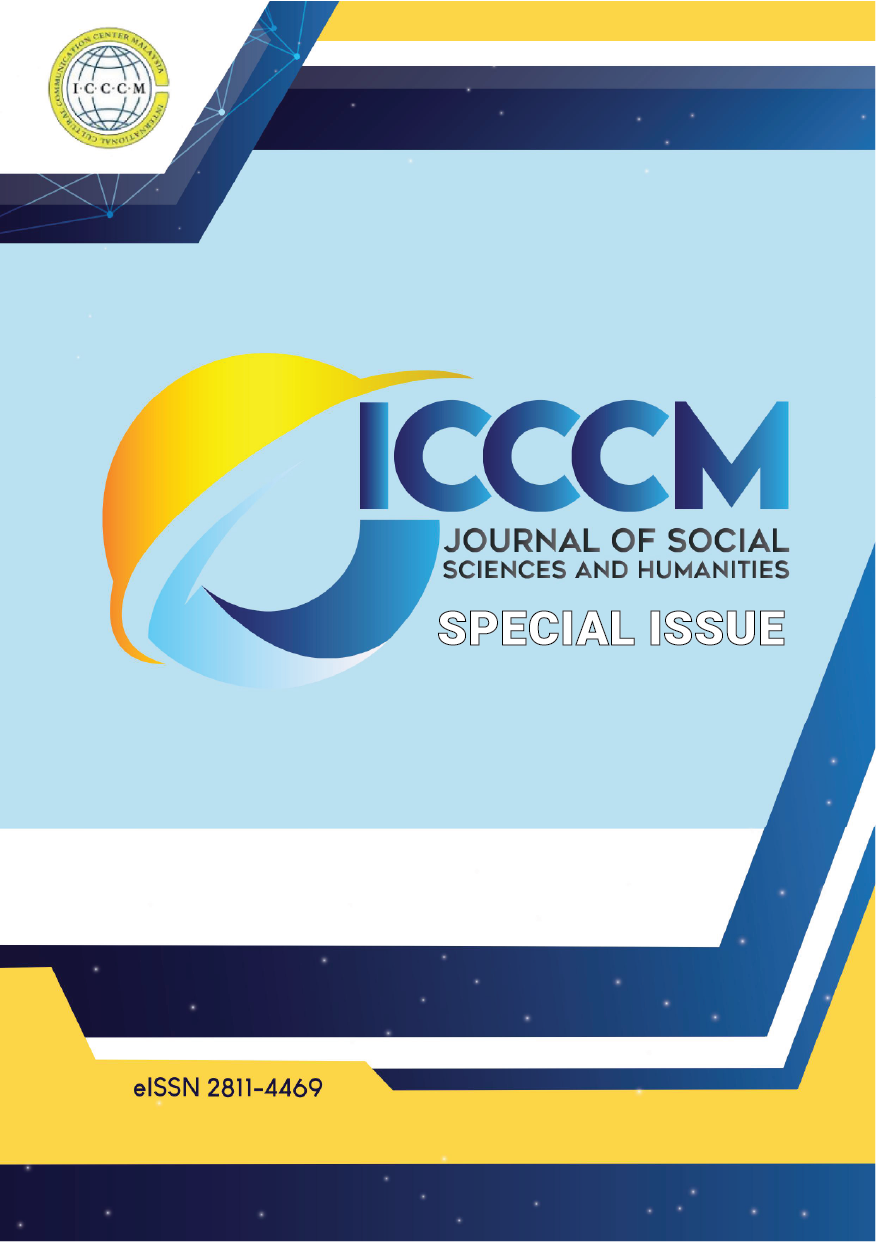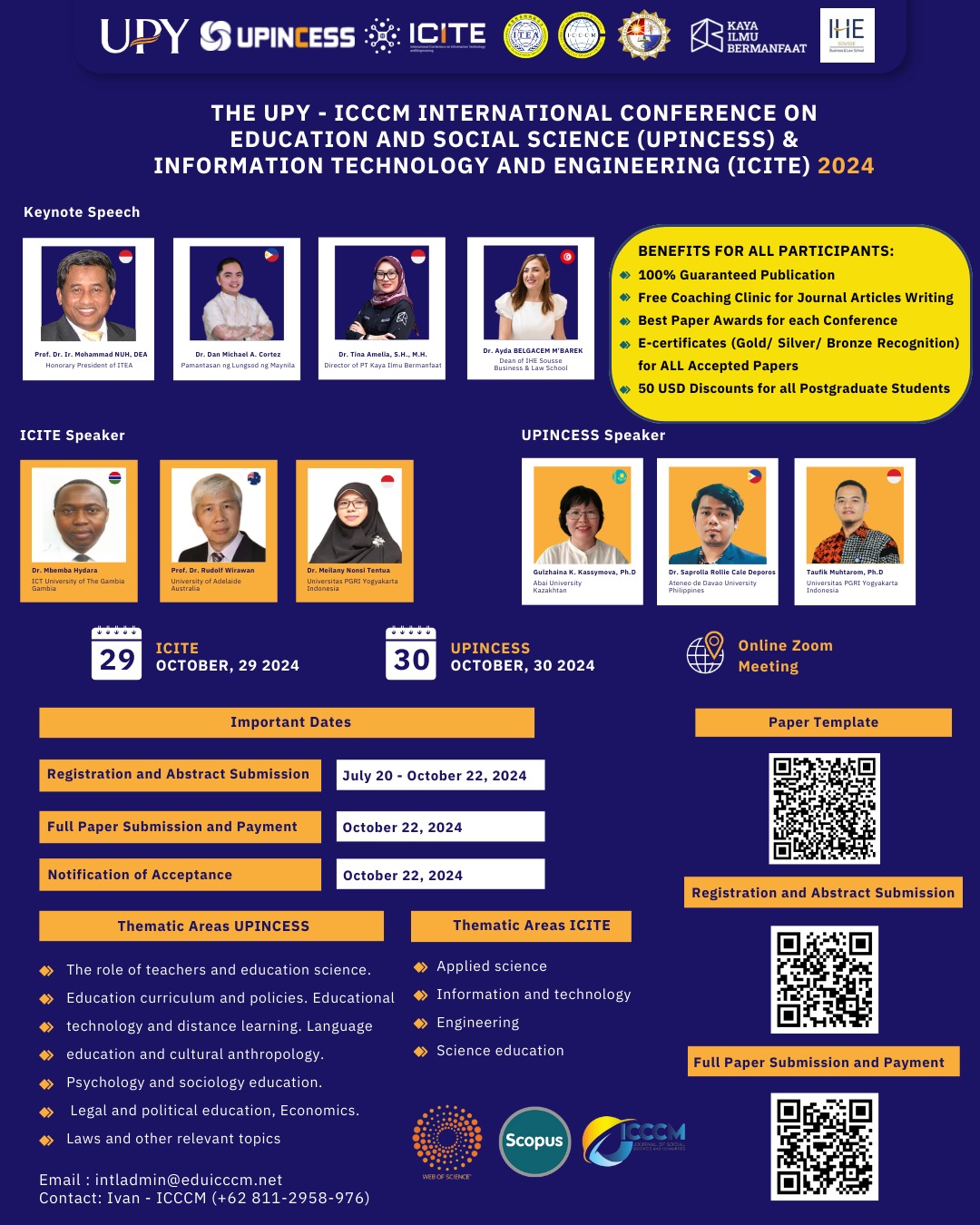Batimung Tradition in the Life of the Banjar Community in South Kalimantan
DOI:
https://doi.org/10.53797/icccmjssh.v4.sp.32.2025Keywords:
Batimung tradition, banjar people, south kalimantanAbstract
This study examines the Batimung tradition of the Banjar community in South Kalimantan through a structural functionalism approach. The results show that Batimung, which involves steaming the body with natural ingredients, developed in response to geographical conditions and the social needs of the community. This tradition has social, spiritual and health functions, and reflects the harmonious relationship between humans and nature. The process of implementing Batimung integrates symbolic and ritual elements, while its meaning reflects cultural values such as purity, cleanliness, and social solidarity, which strengthen the collective identity of the Banjar community. The Batimung tradition is a cultural heritage of the Banjar community in South Kalimantan that involves steam bathing with spices known as part of the wedding procession and traditional medicine. This study aims to describe the role of Batimung in the socio-cultural life, health of the Banjar community, and the challenges of preserving it in the modern era. The results show that Batimung not only functions as a beauty and health ritual, but also strengthens cultural identity and the values of mutual cooperation. However, the declining interest of the younger generation and the modernization of traditional spas threaten the sustainability of this tradition. This study recommends cross-generational training and the integration of Batimung in local content education for cultural preservation.
Downloads
References
Chalmers, I. (2007). The Islamization of southern Kalimantan: Sufi spiritualism, ethnic identity, political activism. Studia Islamika, 14(3), 371-417.
Hadirah, H. (2022). Analisis Hukum Islam tentang tradisi batimung dalam pernikahan adat Banjar di Kusan Hilir Kabupaten Tanah Bumbu analisis hukum Islam (Doctoral dissertation, IAIN Parepare).
Ketelaar, E., McKemmish, S., & Gilliland-Swetland, A. (2005). 'Communities of memory': pluralising archival research and education agendas. An earlier version of this article was presented at the Archives and Collective Memory: Challenges and Issues in a Pluralised Archival Role seminar (2004: Melbourne).]. Archives and manuscripts, 33(1), 146-174.
Kirwanto, A., & Muthiah, H. (2024). THE IMPLEMENTATION OF THE BATIMUNG TRADITION IN SAMARINDA ULU DISTRICT, SAMARINDA CITY. Jurnal Jamu Kusuma, 4(1), 53-57. https://doi.org/10.37341/jurnaljamukusuma.v4i1.89
Lisdariani¹, R., Mu’in, F., Noortyani, R., Listia, R., & Amela, R. (2025). Building Local Values and Religious Beliefs through Traditional Poetry: Insights from Pantun Baantaran of the Banjar People in South Kalimantan, Indonesia.
Munadi, F., & Ilhami, H. (2021). MANUSCRIPT STUDY OF THE HIKAYAT BANJAR: EXCAVATION OF ISLAMIC HISTORICAL SOURCES OF THE ARCHIPELAGO. Al-Banjari: Jurnal Ilmiah Ilmu-Ilmu Keislaman, 20(2). https://doi.org/10.18592/al-banjari.v22i1.8502
Nimah, N., Fatori, A., & RS, P. P. (2025). The Islamic Educational Values in The Batimung Tradition: Implications for The Young Generation in Banjar District. Journal of Southern Sociological Studies, 1(1). https://doi.org/10.26740/jsss.v1i1.40507
Noortyani¹, R., Mu’in, F., & Amelia, R. (2023). Symbolic Communications in the Traditional Wedding Rituals of the Banjar Ethnic Community, Indonesia. ISVS E-Journal, 10(10), 154-178. https://doi.org/10.61275/ISVSej-2023-10-10-11
Nurdiyana, T., & Najamudin, M. (2021, February). Beauty Construction: The Concept and Meaning of Beautiful Women in the Banjar Culture Frame in the City of Banjarmasin Indonesia. In 2nd International Conference on Social Sciences Education (ICSSE 2020) (pp. 335-344). Atlantis Press. https://doi.org/10.2991/assehr.k.210222.055
Opara, E. I., & Chohan, M. (2014). Culinary herbs and spices: their bioactive properties, the contribution of polyphenols and the challenges in deducing their true health benefits. International journal of molecular sciences, 15(10), 19183-19202. https://doi.org/10.3390/ijms151019183
Parsons, T. (1970). On building social system theory: A personal history. Daedalus, 826-881.
Prasetyo, S. F. (2023). Harmony of nature and culture: Symbolism and environmental education in ritual. Journal of Contemporary Rituals and Traditions, 1(2), 67-76. https://doi.org/10.15575/jcrt.361
Sriyana, S. (2025). Cultural and Environmental Dynamics in Social Transformation: The River-to-Land Transition in Central Kalimantan, Indonesia. Fikri: Jurnal Kajian Agama, Sosial dan Budaya, 10(1), 148-164. https://doi.org/10.25217/jf.v10i1.5782
Syauqi, M. I. (2024). TRADISI BATIMUNG DALAM PERNIKAHAN ADAT BANJAR PERPSEKTIF MAQASHID SYARIAH AL-SYATHIBI. Baiti Jannati, 1(1), 35-46.
Yolanda, D., Daud, F. K., & Umar, M. (2024). Tradisi Batimung dalam Tinjauan Sosiologi Hukum Islam: Studi di desa Pematang Limau, Seruyan Hilir, kabupaten Seruyan. Panangkaran: Jurnal Penelitian Agama dan Masyarakat, 8(2), 273-286. https://doi.org/10.14421/panangkaran.v8i2.3845
Downloads
Published
How to Cite
Issue
Section
License
Copyright (c) 2025 Rusmiati, R. Yunanti, Nurhayati

This work is licensed under a Creative Commons Attribution-NonCommercial-ShareAlike 4.0 International License.




